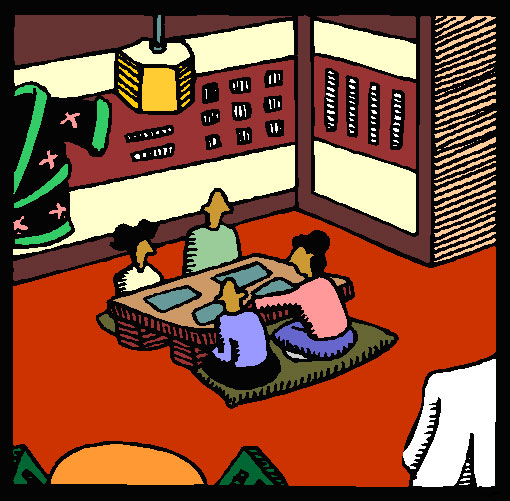
 |
Lesson Title: Focusing on the Japanese Culture: The Importance of Nature in Japanese Culture
Grade Level: 7th grade Foreign Language Exploratory
Time Period: 1 – 2 day lesson plan
Standards:
Expectation 2.1
The student will write compose oral, written, and visual presentations which inform, persuade, and express personal ideas.
Indicator 2.1.2
The student will compose to describe, using prose and/or poetic forms.
Objectives:
Vocabulary/Concepts:
| Haiku | Kimono | Bonsai |
| Tatami room | 5-7-5 | Nature |
Materials/Resources for Student Use:
Haiku Fact Sheet http://home.clara.net/pka/haiku/haiku.htm
Students Worksheet
Plants and flowers in courtyard as topics of Haiku writing
Materials/Resources for Teacher Use:
http://www.tecnet.or.jp/~haiku
http://haiku.insouthsea.co.uk
http://www.geocities.com/Tokyo/Island/5022
Lesson Development:
Motivation/Warm Up
Students enter library classroom, place books on side tables, observe power point loop of National Arboretum slides dealing with nature as they listen to authentic Japanese music.Modeling
Teacher creates a story dealing with emotions and tells students how she dealt with these emotions—by writing a poem.Guided Practice
Teacher suggests that students write Haiku poems to express their emotions. Teacher shows the method of writing a Haiku poem. Teacher then takes students outside to the courtyard and encourages them to focus on the nature aspects of the courtyard. He/She explains to students the importance of nature in the lives of Japanese people.Independent Practice
Students will divide into groups of 3 – 4 persons and will choose a topic relating to nature. They will create, edit, and refine their poem, draw a picture related to the poem, include a title, and choose a kanji that supports the intent of their poem. Groups will then volunteer to present their creation to the class in the tatami room.Assessment
Students will:
Receive participation points for working cooperatively in groups.
Complete a group assessment survey form.
Volunteer to present their group Haiku poem, picture and kanji to the class.
Be assessed by a scoring rubric.
Write a reflection piece about their newfound appreciation of nature.Closure/Summary
Students will begin to share their reflection piece with the class and others can finish theirs for homework.
Lesson Extension:
Name of Project __________________________________________
Rate Your Group
Write the name of each group member in the first column.
In the 2nd and 3rd columns, please rate each member of your group by the amount of work they completed and how cooperative they worked with the group. Rate each member according to the criteria below on a scale from 1 – 10.
| Name of member | Amount of work | Cooperative Work | Comments |
Your grade for your part of the project _______________
 |
Performance Assessment Rubric for
Group Presentation of a Haiku Poem
You have the opportunity to create, edit, and refine a group Haiku poem. Each group will draw a picture related to the poem, include a title, and choose a kanji that supports the intent of the poem. Groups will then volunteer to present their creation to the class in the tatami room.
Members of the Group _______________________________________________________
Name of the Haiku Poem _________________________________________Mod _______
| Pts earned | Completion of Tasks |
| 4 | • group members participate in the creation, editing and refining
of the original Haiku poem • group is ready to give presentation on time. • students speak in a loud, positive, enthusiastic, systematic and interesting way • each member of the group plays an integral part in the creation of the poem, drawing and Kanji • Haiku is given a creative and culturally appropriate title • Group works well together in a cooperative manner. • group turns in poem, drawing and Kanji in a creative way |
| 3 | • group members participate in the creation, editing and refining
of the original Haiku poem |
| 2 | • most group members participate in the creation, editing and
refining of the original Haiku poem |
| 1 | • few group members participate in the creation, editing and
refining of the original Haiku poem |
 |
Lesson Title: Storytelling in the Japanese Tradition (Lesson 1)
Grade Level/Content Focus: Grade 7/Foreign Language Exploratory
Time Period: 1 day lesson plan
Standards:
English 1.2; 2.1
Indicator 1.2.1
The student will consider the contributions of plot, character, setting, conflict,
and point of view when constructing the meaning of a text.
Indicator 2.1.3
The student will compose to express personal ideas, using prose and/or poetic
forms.
Objectives:
Students will read a Japanese Folk tale in order to identify the elements of
an effective story and respond to the content by writing a reflective journal
entry.
Vocabulary/Concepts/Keywords:
| Elements of a Folktale/story | Story Development |
| Character | Hook |
| Setting | Conflict |
| Theme | Conclusion/Resolution |
| Plot | Reflective Writing |
| Oral Tradition | Story Map |
| Introduction |
Materials/Resources for Student Use:
Copies of folktales http://www.pitt.edu/~dash/japan.html
Story Map graphic organizer
Handout on the Elements of Folktales
Journals
Materials/Resources for Teacher Use:
Copy of Folktale http://www.pitt.edu/~dash/japan.html
Transparency of Story Map graphic organizer
Transparncy of Handout – Elements of Folktales
Lesson Abstract:
Teacher or teacher assistant will read a Japanese Folktale to the class. As
the teacher is reading, students will complete a story map graphic organizer.
This will allow the teacher to check comprehension at different intervals of
the story. There will be a class discussion on the elements of a good story
(Introduction, body, conflict, conclusion, theme, charcter delineation, use
of graphic vocabulary). Students will then write a reflective piece on the story
that they heard/read. They will write about the lesson/theme of the story, what
they liked about the story and what they might change about it.
Lesson Development:
Motivation/Warm Up
Explain the term “Oral Tradition” as it relates legends, folktales and other stories.Modeling
Teacher will allow students to share their answers then explain how many of the folktales that we currently enjoy have come to us by way of the oral tradition, that many of these stories were not written and have been told and retold over several generations. The teacher will then continue in the mode of the oral tradition by reading/telling the folktale.Guided Practice
Students will complete a story map during the reading and use this as a springboard into a discussion of the elements of a folktale. Students will assess the merits of the folktale by attempting to ascertain the effectiveness of the treatment of the theme.
Independent Practice
Students will reflect on the cultural value and effectiveness of the folktale by writing in their journals. They may write about what they liked/did not like about the folktale and how they might change it. They may also write about what they learned about the Japanese culture from the folktale.Assessment
Selected students will be allowed to share their reflections with the class. However the teacher may also choose to ask specific questions to ascertain the level of comprehension of students: What did you learn from this story? What does this story tell us about what is important to the Japanese? What is the theme? Is this story similar to any story that you may have heard/read in the past?Closure/Summary
Students may create an illustration for the folktale to reflect an important point in the story. They may choose to illustrate the main character’s conflict or the central theme of the folktale. This may be assigned for homework.
Lesson Extensions
An extension to this lesson would take the form of a creative writing assignment.
Students could use what they have already learned about the Japanese culture
to create their own original folktales. Themes may include but will not be limited
to: Nature, The Importance of Family, Education, Developing a love and respect
for one’s elders...
Story Map
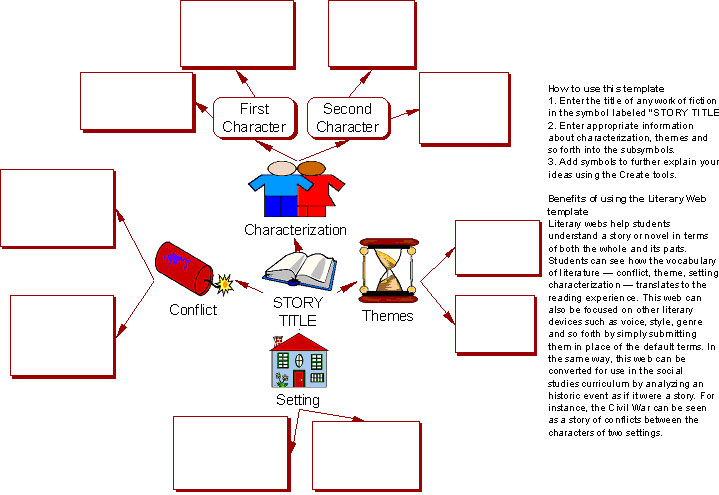
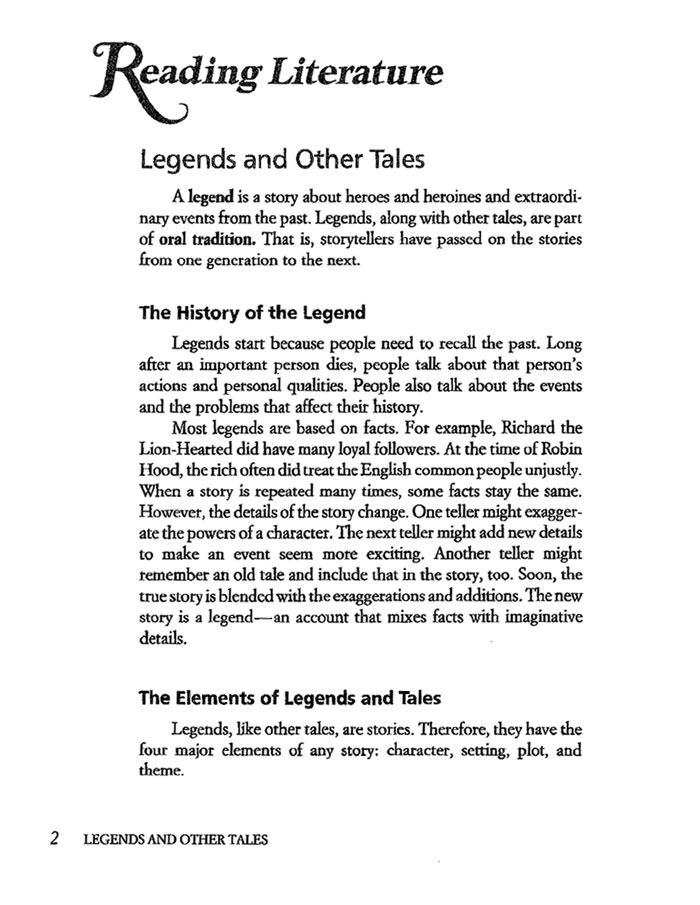
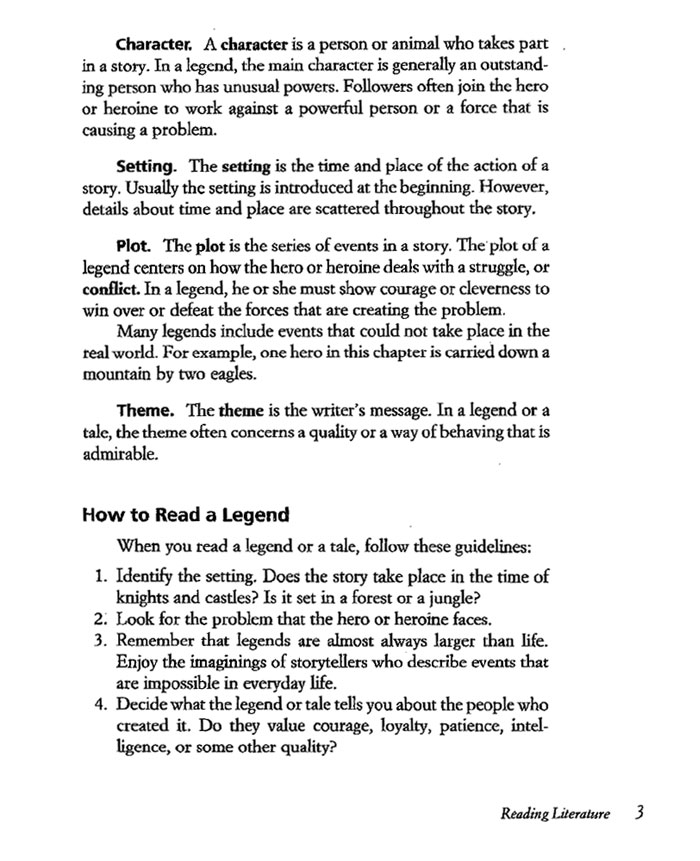
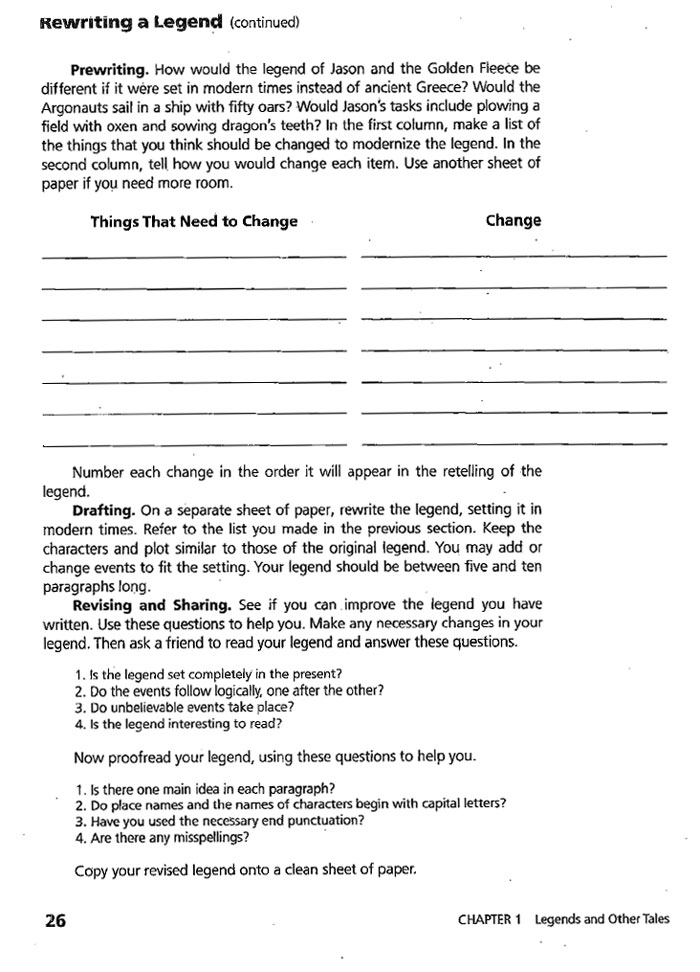
 |
Lesson Title: Storytelling in the Japanese Tradition (Lesson 2)
Grade Level/Content Focus: Grade 7/Foreign Language Exploratory
Time Period: 1 day lesson plan
Standards:
English 1.2
Indicator 1.2.1
The student will consider the contributions of plot, character, setting, conflict,
and point of view when constructing the meaning of a text.
Objectives:
The students will observe a video of a Japanese folktale and identify the elements
of a short story in order to create their own original Japanese folktale.
Vocabulary/Concepts/Keywords:
| Graphic Organizer/Story map | Setting |
| Story Checklist identifying the elements | Plot |
| Folktale | Characterization |
| Myth | Theme |
| Fable | Water |
| Bamboo Plants | Commitment |
| Morals | Cranes |
Materials/Resources for Student Use:
A map of Japan http://www.tulane.edu/~rouxbee/japan/largemap.html
Folktales presented on video (Japanese Culture: Old and New and Minwa: Two Traditional
Tales)
Story Elements Checklist
Story Map Graphic Organizer
Calligraphy pens and rice paper samples
Materials/Resources for Teacher Use:
Television/VCR
Overhead Projector
Lesson Abstract:
Students will watch a Japanese folktale video with a critical eye. Students
will complete a checklist and identify the elements apparent in this short story.
Then, in groups of four students will create an ending to complete the story.
Groups will present and defend their conclusions to the class.
Lesson Development:
Motivation/Warm Up
Students will be presented with a brief handout about the creation and beginning of the island country of Japan. They will read the myth and then create a dragon from the shape of Japan. They will give their dragon a Japanese name. Finally, they will list the main ideas on their dragon. (5-10 mins.)Modeling
During this timed session, the teacher will actually create a dragon on a prepared overhead slide, and after ten minutes the teacher will place the slide for viewing on the overhead projector.Guided Practice
Each student will have the opportunity to view two brief videos on Japanese myths. While the movies are playing they will use a story checklist and check off the elements of a good story as the movies are being presented. The checklist will include the following words: a. setting b. plot c. characterization d. themeIndependent Practice
After identifying the elements of a short story, the students will select one out of two myths and create their own ending of the myths which they have selected. For this assignment, the students will begin this task in class by brainstorming their ideas on a story map graphic organizer. Each person will then pair up with a partner and exchange their story map for their partner to edit.Assessment
The students will have the opportunity to complete their assignment at home and return the finished product in a “scroll format”. Their scroll should be decorated with at least two symbols which they would already know and the story itself should be written with a Calligraphy pen.Closure/Summary
The students will review the format/elements of a good story by telling the effective elements that they will include in their newly created endings of their myths.

 |
Are the following elements apparent in the Japanese Folktale…?
| Elements | Yes (hai) | No (iie) |
| Introduction | ||
| Setting | ||
| Characters | ||
| Body | ||
| Plot | ||
| Conflict | ||
Use of graphic vocabulary |
||
| Theme | ||
| Conclusion |
Story Map

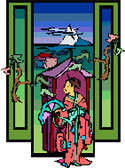 |
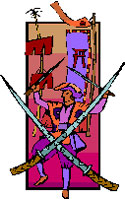 |
Lesson Title: Storytelling in the Japanese Tradition (Lesson 3)
Grade Level/Content Focus: Grade 7/Foreign Language Exploratory
Time Period: 2 - 3 day lesson plan
Standards:
Expectation 2.1
The student will write compose oral, written, and visual presentations which
inform, persuade, and express personal ideas.
Objectives:
Students will
- create an original Japanese folktale in order to demonstrate their newfound
knowledge of the Japanese culture and tradition.
- use their planning sheets and graphic organizers in order to organize their
thoughts.
- present their folktale to the class in order to make the class aware of the
variety of customs and traditions that are embedded in the Japanese culture.
Vocabulary/Concepts/Keywords:
| Storytelling | Story Development | Reflective Writing |
| Elements of a Story | Hook | Revision |
| Map | Peer editing | Folktale |
| Introduction | Conclusion |
Materials/Resources for Student Use:
Story Planning Sheet
Puppets/Puppet Show
Folktale Checklist
Assessment Rubric
Materials/Resources for Teacher Use:
Inspiration software program – Inspiration.com
Computer
LCD projector
Lesson Abstract:
In groups of three or four, students will create original folktales
dealing with what they have learned about the Japanese culture. Topics may include:
nature, family traditions, holidays, and pastimes. Students will use their planning
sheets to develop their folktales. Upon completion of their rough draft, groups
will exchange their folktale for peer editing. Students will then reread and
revise their story and may choose to incorporate their peers’ suggestions.
Each group will decide how to present their original folktale. They may choose
to present using a puppet show, create a power point presentation, or create
a play. Students will be assessed using a rubric.
Lesson Development:
Motivation/Warm Up
Each student will take 3 – 4 graphic organizers from the front table as he/she enters the class. In pairs, students will choose one of the organizers to brainstorm cultural topics from which they can develop an original Japanese folktale.Modeling
Teacher writes down all of the topics using the overhead projector or Inspiration software program as he/she speaks about the advantages of using certain themes.Guided Practice
Teacher begins to create a folktale using one of the topics discussed and encourages students in the class to build upon the folktale incorporating the culture and customs.Independent Practice
Students are then placed in random groups of five (colored squares, count off, etc.) and discuss their ideas for their original Japanese folktale. Students write their script incorporating the points in the checklist and practice their folktale for their presentation.Assessment
Students give their checklist/rubric to the teacher for assessment purposes. Students present their folktale to the class.Closure/Summary
Students in the class orally state what they liked about the Japanese folktale and what the group could do next time to improve their presentation.
Lesson Extensions
Students can:
- make their own puppets to use in the puppet show
- present their cultural show to other classes in the building during Asian
– Pacific awareness month
- create a booklet that displays their folktale and exhibit them in the hall
showcase
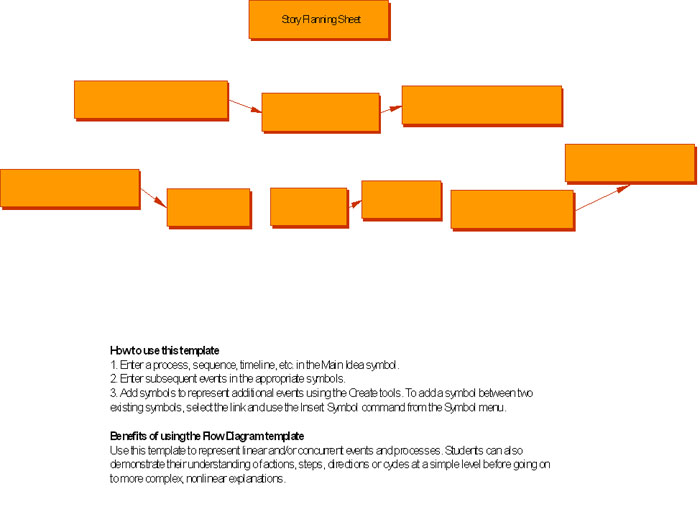
 |
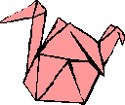 |
Original Japanese Folktale Checklist
Are the following elements apparent in the Japanese Folktale…?
| Elements | Yes (hai) | No (iie) |
| Introduction | ||
| Setting | ||
| Characters | ||
| Body | ||
| Plot | ||
| Conflict | ||
Use of graphic vocabulary |
||
| Theme | ||
| Conclusion |
Performance Assessment Rubric for Original Japanese Folktale
 |
As a Japanese storyteller, you have the opportunity to tell your original folktale
in a very interesting manner. You can choose to present your story from a variety
of ways (play, puppet show, reader’s theatre, etc.) to enlighten your
audience about the Japanese oral tradition of Storytelling.
Members in Group _______________________________________________________
Name of Folktale _______________________________________________ Mod _____
| Pts earned | Completion of Tasks |
| 4 | • group members participate in the telling of the original Japanese
folktale. |
| 3 | • group members participate in the telling of the original Japanese
folktale. |
| 2 | • most group members participate in the telling of the original
Japanese folktale. |
| 1 | • most group members participate in the telling of the original
Japanese folktale. |
Comments:
Teacher Background
Currently teachers at Martin L. King, Jr. Middle School
Judith Lambert, Foreign Language Dept. Chair
Judith Lambert-Winfield began her teaching career at Howard University
in 1986 as a Foreign Language Lab Instructor. She has traveled to different
parts of the world including Spain, France and the Caribbean areas. Mrs. Lambert-Winfield
has worked in many different capacities including as an International Consultant
with the Organization of American States. She worked as a Mentor teacher with
both D.C. Public Schools and with the University of Maryland. She has worked
also at UDC as an Adjunct Professor. Mrs. Lambert-Winfield's responsibilities
included teaching police officers from the D.C. Police Department , to communicate
with the Hispanic population . This assignment lasted from1991-1992 as a consequence
of the riots occurring in the Adams Morgan area.
Presently, Mrs. Lambert-Winfield is currently teaching at Martin Luther King
Middle School where she is considered as a valuable teacher because of her professionalism
and creativity. Mrs. Lambert-Winfield continues her quest to sensitize and immerse
the entire Beltsville community with her love for Foreign Languages.
Dale Williams, Foreign Language Teacher
Dale Audrey Williams earned her graduate degree in Spanish in 1981
at the State University of New York in Binghamton. She began her teaching career
at Harpursville High School in Harpursville New York, in 1982. Mrs. Williams
relocated to Guyana, South America where she taught Spanish at the University
of Guyana. Mrs. Williams was involved in the Spanish Cultural group known as
the “Circulo”. This group was instrumental in promoting the Spanish
language and culture on the campus of the University of Guyana. In Guyana, Mrs.
Williams was afforded the opportunity to travel to the Spanish speaking world.
She visited several countries including Venezuela, Colombia, and Guatemala.
On her return to the United States of America in 1986, Mrs. Williams returned to teaching high school students at the Academy of Notre Dame, a Catholic High School for girls in Washington DC. There she taught Spanish levels I, II, and III. In 1990, Mrs. Williams joined Prince George’s County Public School system as a Foreign Language teacher. She has taught Spanish 1, French1, Introduction to Spanish, Introduction to Latin, Flex, and Reading to Middle School students.
Deborah Davis, Foreign Language Teacher
Debbie began her teaching career in the fall of 1978. She accepted
a job at Glenridge Jr. High teaching FLEX, Spanish, and English. Throughout
the years she taught at Thomas Johnson, the first middle school model, and Kenmoor
Middle, the first TAG Magnet in the county. In 1989 she accepted a position
at Dwight D. Eisenhower Middle School. She was only at that school for six months
because she was chosen to be the new Foreign Language Instructional Assistant
in Foreign Languages for Prince George’s County Public Schools. She served
in that capacity for eight years.
Due to changes in staffing at the central area office, Debbie’s
position was eliminated and she chose to go back to teaching. She is currently
teaching FLEX, Introduction to French, and French I. She is very fortunate to
be working at a school where there is such a caring and supportive Foreign Language
department and staff. Together this Foreign Language Department works to provide
hands-on learning experiences, guest speakers and educational field trips to
enrich the language and cultural understanding for all students.
Debbie takes advantage of the many opportunities that are offered in the area
of Foreign Languages. She has her Masters in Bilingual education and more than
60 additional workshop credits. She has taught a variety of workshops for new
teachers and for student interns at the University of Maryland. She has also
given workshops at the state level (MFLA), the regional (NECTFL) and the national
(ACTFL) level. She is very interested in encouraging future Foreign Language
educators and continues to train student interns from the University of Maryland
each year.
Debbie is also very active in the Foreign Language field. She won an award for Outstanding Teacher from Prince George’s County and also one from the town of Bowie. She also won a grant from the Washington Post for co-authoring the proposal “Accept Yourself, Accept Others, a multicultural approach.” She is also active in various professional organizations. She is currently on the board of the Maryland Foreign Language Association and is the Executive Secretary for the National Association for District Supervisors of Foreign Languages.
The Importance of Nature in Japanese Culture
Storytelling in the Japanese Tradition
Judith Lambert, Dale Williams, Deborah Davis
September 28, 2004